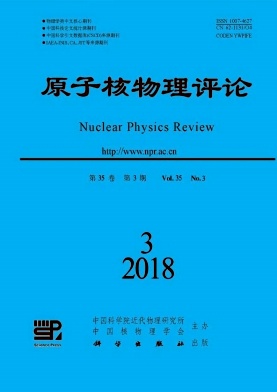|
[1]
|
YANG J C, XIA J W, XIAO G Q, et al. Nucl Instr Meth B, 2013, 317:263. |
|
[2]
|
MA X, WEN W Q, ZHANG S F, et al. Nucl Instr Meth B, 2017, 408:169. |
|
[3]
|
RADON T, KERSCHER T, SCHLITT B, et al. Phys Rev Lett, 1997, 78(25):4701. |
|
[4]
|
LITVINOV Y A, GEISSEL H, RADON T, et al. Nucl Phys A, 2005, 756(1-2):3. |
|
[5]
|
FRANZKE B, BECKERT K, EICKHOFF H, et al. Phys Scri, 1995, T59(1995):176. |
|
[6]
|
HAUSMANN M, ATTALLAH F, BECKERT K, et al. Nucl Instr Meth A, 2000, 446(3):569. |
|
[7]
|
XU X, ZHANG P, SHUAI P, et al. Phys Rev Lett, 2016, 117(18):182503. |
|
[8]
|
WU B, YANG J C, XIA J W, et al. Nucl Instr Meth A, 2018, 881:27. |
|
[9]
|
XIA J W, ZHAN W L, WEI B W, et al. Nucl Instr Meth A, 2002, 488(1):11. |
|
[10]
|
LITVINOV S, TOPREK D, WEICK H, et al. Nucl Instr Meth A, 2013, 724:20. |
|
[11]
|
DOLINSKⅡ A, LITVINOV S, STECK M, et al. Nucl Instr Meth A, 2007, 574, 207. |
|
[12]
|
DOLINSKⅡ A, GEISSEL H, LITVINOV S, et al. Nucl Instr Meth B, 2008, 266, 4579. |
|
[13]
|
GROTE H, SCHMIDT F. Pac 2003. Proceedings of the. IEEE, 2003:3497. |
|
[14]
|
GEISSEL H, LITVINOV YU A. J Phys G, 2005, 31, S1779. |
|
[15]
|
SUN B, KNOBEL R, LITVINOV YU A, et al. Nucl Phys A, 2008, 812(1):1. |
|
[16]
|
BERZ M, HOFFMANN H C, WOLLNIK H. Nucl Instr Meth A, 1987, 258(3):402. |
|
[17]
|
WOLLNIK H, HARTMANN B, BERZ M. AIP, 1988, 77:74. |
|
[18]
|
IWASA N, GEISSEL H, MÜNZENBERG G, et al. Nucl Instr Meth, 1997, 126(1-4):284. |
|
[19]
|
IWASA N, WEICK H, GEISSEL H. Nucl Instr Meth B, 2011, 269(8):752. |
|
[20]
|
ZENG Q, WANG M, ZHOU X H, et al. Phys Rev C, 2017, 96(3):031303. |
|
[21]
|
ABE Y, YAMAGUCHI Y, WAKASUGI M, et al. Phys Scripta, 2015, T166:014047. |






 甘公网安备 62010202000723号
甘公网安备 62010202000723号 DownLoad:
DownLoad: